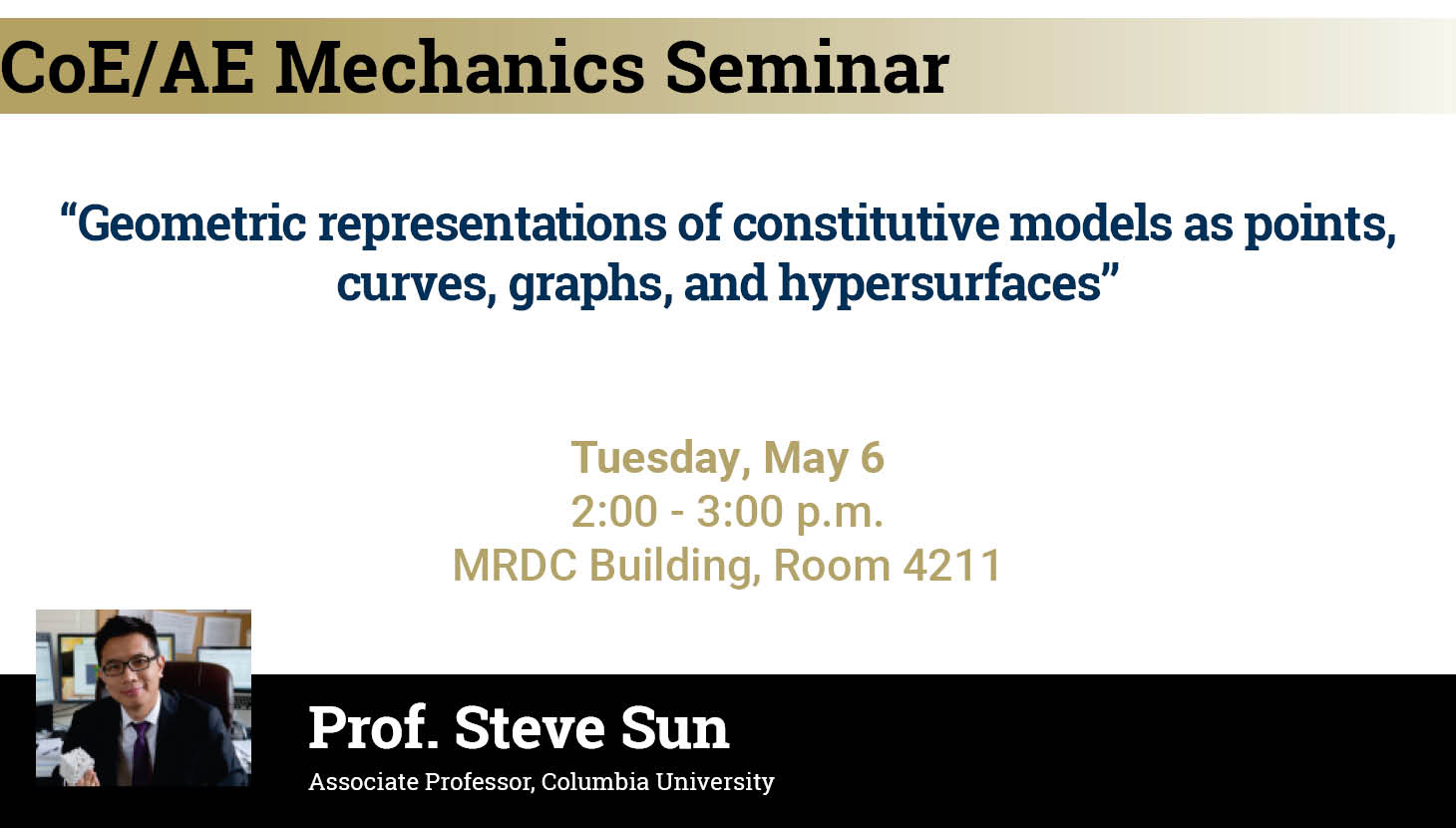
CoE / AE Mechanics Seminar
Geometric representations of constitutive models as points,
curves, graphs, and hypersurfaces
Prof. Steve Sun
Associate Professor | Columbia University
Tuesday, May 6th
2:00 - 3:00 PM,
MRDC Building, Room 4211
Abstract
This talk explores the various ways high-fidelity constitutive laws for a wide range of solids, such as soil, rock, alloys, and polymer composites, can be represented and how the choice of representations influences the accuracy, robustness, and data/computational efficiency for computer simulations of solids. To represent material models as points, we adopt a model-free approach that enables physical simulations of material behaviors without a smooth constitutive law. In this case, pointwise stress-strain pairs are selected in Gauss points of finite elements to be compatible with the conservation laws. To represent material models as a mesh, we introduce a latent diffusion model where previous material models and experimental data are used to guide the reverse generation of models. This mesh-based material model is particularly efficient for non-smooth plasticity, where projection on segments can lead to significantly faster simulations. To represent material models as equations, we use the neural additive model in the projected space of strain measures. This technique enables us to search for hyperelasticity in high-dimensional space without sacrificing the expressivity of neural networks. We show that the proposed model may reproduce any polynomial of arbitrary orders and dimensions and thus achieve the universal approximation through the Stone-Weierstrass theorem. Through a series of 1D post-hoc symbolic regressions, we obtain symbolic material models that significantly reduce the inference time for hydrocodes. The pros and cons of these techniques for various practical applications will be discussed.